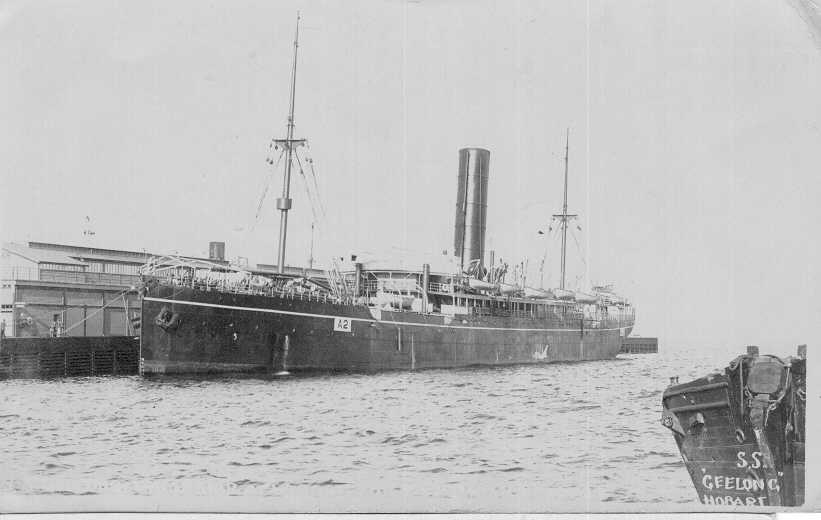
Caption
Passenger Vessel "Geelong", built in 1904 by barclay, Curle & Co Ltd - Glasgow. Owned by Blue Anchor Line Ltd and managed by W Lund & sons. "Geelong" was the newest and largest of the five Blue Anchor Line ships purchased by P & O in 1910 and transferred to the newly formed P & O Branch Line later that year. She was an enlarged version of the "Commonwealth", built for Blue Anchor in 1902, and came from the same shipyard, Barclay & Curle in Glasgow. If "Commonwealth" was unattractive, "Geelong" was even more so by virtue of her enormous, high funnel, which completely spoilt her balance. Triple expansion machinery drove twin screws to give a service speed of 14 knots, and accomodation was provided for 90 first class and 450 third class passengers. On 27 May 1904 she departed London on her maiden voyage to Australia, with calls at Cape Town and Durban en route. "Geelong" was refitted to carry 700 third class passengers only. On 13 October 1910 she made her first departure from London under the P & O Branch Line banner. The only other change to her appearance was the addition of a white band around the hull, as carried by all P & O ships. P & O wasted no time ordering five new ships for the Branch Line, which entered service between 1911 and 1914. "Geelong", along with "Commonwealth" was retained to operate with them on a three weekly schedule. "Geelong" was in Australian waters when war was declared, and was one of the first ships to be requisitioned by the Australian Government, becoming troopship A2. She was converted in Melbourne to carry 62 officers and 1539 other ranks, and went to Hobart to collect her complement of troops for Britain. From there she went to Albany where the first convoy of Australian troops to go overseas was forming, and went with them to the Middle East. She remained under Australian control, and was steaming through the Meditteranean in a convoy when, on 1 January 1916, she was involved in a collision with the British collier "Bonvilston" some 96 miles north of Alexandria. The damage suffered by "Geelong" was so severe that she sank soon after, the first of only two Branch Line steamers to be sunk in the war.
Tonnage: 7954 gross, 5134 net
Dimensions: length 450'2", breadth 54'5", draught 26'9"
Official Number: 118426
Port Of Registry: London
Flag: British
Citation
CC-BY
Source
South Australian Maritime Museum, donated by C.G. Wightman
Links to Content
File reference
1618

